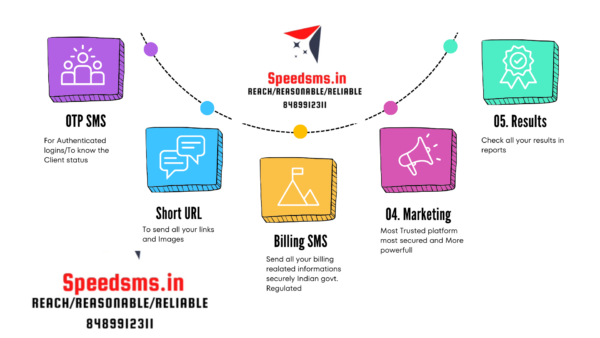Description
what is otp sms how does it work
In this digital world, securing personal information and transactions is paramount. One of the key tools utilized for enhancing security measures is the One-Time Password (OTP). Let’s delve deeper into what OTP is, its significance, and how it works to safeguard sensitive information.
What is OTP?
OTP stands for One-Time Password. It is a unique, temporary code consisting of a series of numeric or alphanumeric characters, typically valid for a short period, and used for authentication or verification purposes. The primary objective of OTP is to ensure added security by providing a dynamic and time-sensitive code for accessing accounts or completing transactions.
what is otp
How Does OTP Work?
OTP works as a secondary layer of authentication or verification. When a user initiates a transaction, login attempt, or any action that requires verification, the system generates a unique OTP and sends it to the user’s registered mobile number or email address.
Upon receiving the OTP, the user enters this code into the designated field on the website or application within a stipulated time frame. If the entered OTP matches the code generated by the system, the user is granted access or authorization to proceed with the requested action. Once used or after its expiration time, the OTP becomes invalid, ensuring it cannot be reused.
Benefits of Using OTPs
Enhanced Security: OTP significantly reduces the risks associated with unauthorized access or fraudulent activities. Its dynamic nature and limited validity period add an extra layer of security, making it challenging for attackers to misuse the code.
Secure Transactions: OTPs play a vital role in securing online transactions, including banking, e-commerce purchases, fund transfers, and more. It ensures that only the intended user can authorize a transaction.
Prevents Phishing and Identity Theft: By providing a unique, time-sensitive code, OTPs mitigate the risk of phishing attacks and identity theft. Even if a cybercriminal manages to acquire login credentials, they would require the OTP sent to the registered device for access.
Convenience: OTPs offer a seamless and user-friendly authentication process without the need for physical hardware tokens or devices. They are easily accessible via mobile phones or email, enhancing convenience for users.
Safety and Validity Time of OTP: One Time Password is designed to be a short-lived code, typically valid for a few minutes (ranging from 1 to 10 minutes). This limited validity ensures that even if intercepted, the code becomes obsolete after a short period, reducing the chances of misuse.
How do you set up OTP SMS
set up otp sms
Setting up OTP (One-Time Password) via SMS involves several steps and typically requires integration with an SMS service provider or an SMS API.
Choose an SMS Service Provider: Select a reliable SMS service provider that offers OTP SMS functionality. Ensure the provider offers robust security measures, reliable delivery, and scalability to handle your volume of messages.
Obtain an API Key or Credentials: Sign up with the chosen SMS service provider and obtain API credentials or an API key. This key will allow your application to communicate with the SMS provider’s servers to send OTP SMS messages.
Integrate the API: Integrate the SMS API into your application or website. This involves using programming languages like Python, JavaScript, PHP, etc., to send requests to the SMS provider’s server. Follow the API documentation provided by your chosen provider for integration guidance.
Generate and Send OTP: When a user initiates an action that requires OTP verification (like account registration, login, or transaction), your application generates a unique OTP. This code is usually random, time-sensitive, and unique for each transaction or session.
Send OTP via SMS: Use the integrated API to send the generated OTP to the user’s registered mobile number. Your application sends an HTTP request to the SMS provider’s server with the user’s phone number and the OTP. The SMS provider then delivers the OTP to the user’s mobile device.
Implement Validation Logic: After sending the OTP, your application waits for the user to input the received code. Validate the entered OTP against the generated OTP. If they match and the OTP is within its valid time frame, grant access or complete the action. If the OTP is expired or incorrect, deny access or prompt the user to generate a new OTP.
Handle Expiry and Resending: Manage the expiry time of the OTP (usually within a few minutes) and provide the option to resend the OTP if the user requests it or if the OTP expires.
Monitor and Debug: Regularly monitor the OTP sending process and ensure that OTP SMS messages are being sent and received correctly. Debug any issues that may arise during the sending process to maintain a seamless user experience.
Conclusion:
One-Time Passwords (OTPs) play a crucial role in fortifying security measures. Serving as a dynamic authentication tool, OTPs strengthen protection by offering temporary, unique numeric or alphanumeric codes (4-6 digits), hindering unauthorized access and fraudulent activities. Their short-lived nature and accessibility via mobile devices or emails enhance not only security but also convenience. Understanding the significance and mechanisms behind OTPs empowers users and businesses to navigate the digital realm with confidence, ensuring a safer online experience.
Why go through all these hassle, If you want OTP SMS service just contact us our team of experts will help you.


